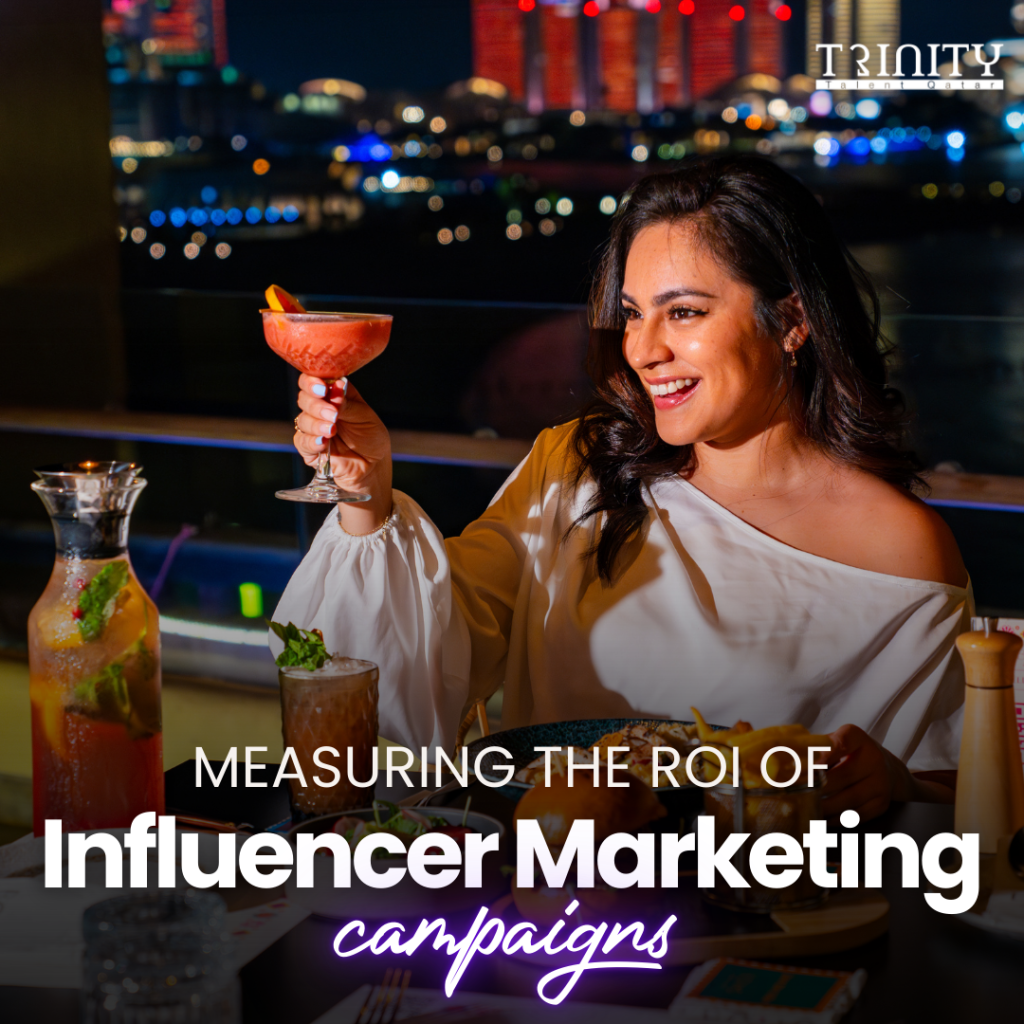Influencer marketing has revolutionized how brands connect with audiences, creating authentic and relatable messaging that resonates deeply. However, one of the most critical aspects of running successful influencer campaigns lies in measuring the return on investment (ROI). For industries such as event planning and staffing, where services are customer-focused, understanding the ROI ensures resources are allocated effectively. Whether you’re running event staff training in Qatar or partnering with a model in Qatar to promote a luxury product, a strategic approach to evaluating performance is essential.

The first step in measuring ROI for influencer marketing campaigns is setting clear objectives. Every campaign should have well-defined goals that align with business priorities. Objectives can range from increasing brand awareness and boosting engagement to driving website traffic or generating leads. For instance, if you’re conducting event staff training in Qatar and wish to highlight your expertise, a campaign goal might include increased inquiries or sign-ups. Having measurable objectives ensures that you can effectively evaluate the campaign’s performance.
Tracking metrics is at the heart of ROI measurement. Metrics such as reach, engagement rate, clicks, conversions, and sentiment analysis provide valuable insights into a campaign’s effectiveness. For example, a model in Qatar hired to promote an event or product should generate measurable buzz through likes, comments, and shares on their posts. Similarly, if the campaign is promoting event staff training in Qatar, tracking how many attendees registered as a direct result of the influencer’s efforts can help evaluate the campaign’s success.
Revenue attribution is another crucial aspect of ROI measurement. This involves identifying how much revenue a specific campaign generated. Brands often provide influencers with unique discount codes or affiliate links to directly link sales to their efforts. For instance, an influencer promoting event staff training in Qatar might share a registration link with a tracking code. By analyzing the number of registrations made through that link, brands can attribute revenue to the campaign and calculate its profitability.
Sentiment analysis is an often-overlooked metric in influencer campaigns. While numbers such as clicks and likes are important, understanding how audiences perceive the brand through influencer content is equally vital. For example, when a model in Qatar promotes a service or product, the comments and responses from their audience can indicate whether the content resonates positively. For brands offering event staff training in Qatar, positive sentiment could lead to more inquiries and recommendations, showcasing the campaign’s indirect value.
Tools and technologies play a vital role in streamlining the ROI measurement process. Social media analytics tools, influencer marketing management platforms, and CRM systems provide detailed insights into campaign performance. Brands can also integrate tools like Google Analytics to track web traffic and conversions driven by influencer campaigns. These insights are particularly beneficial when promoting services like event staff training in Qatar, as they help identify patterns and refine future campaigns for better results.
Another key aspect of measuring ROI is understanding the value of long-term relationships with influencers. While immediate metrics are essential, campaigns often yield indirect benefits, such as increased brand recognition and customer trust, which can take time to materialize. For example, a model in Qatar working with a brand on multiple campaigns may establish a sense of reliability and familiarity with their audience, resulting in stronger engagement and higher conversion rates over time.
One challenge in measuring ROI is the difficulty of quantifying intangible benefits like brand loyalty and awareness. These benefits, while hard to measure directly, play a significant role in the overall success of a campaign. For instance, an influencer promoting event staff training in Qatar might not drive immediate registrations but could increase the brand’s visibility among a broader audience. Over time, this increased visibility can lead to more inquiries and collaborations, showcasing the indirect impact of the campaign.
Finally, learning from past campaigns is a critical step in improving ROI measurement. By analyzing what worked and what didn’t, brands can refine their strategies for future campaigns. For example, if a particular model in Qatar drove exceptional engagement rates, the brand might consider collaborating with them on more projects. Similarly, feedback from influencers and audiences can provide valuable insights into how to better align future campaigns with brand objectives.
Measuring the ROI of influencer marketing campaigns is a comprehensive process that requires a combination of clear objectives, data-driven analysis, and strategic evaluation. For brands offering services such as event staff training in Qatar or collaborating with a model in Qatar, understanding the impact of their efforts is key to maximizing returns. By focusing on both tangible metrics and intangible benefits, brands can ensure their influencer campaigns are not only successful but also sustainable in the long run.



